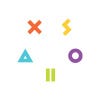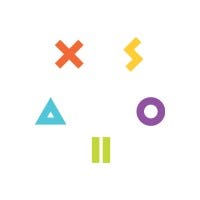The State of Pricing in the Game Industry
Figuring out how to price your game in today's market can be a bit confusing. For today's post we're going to look at the pricing guidelines that have become a part of the Game Industry.

The Game Industry like any product driven industry has had fluctuating value with its content. Ten years ago, the act of having game sales or buying games for 99 cents was unheard of. Today's post examines what consumers have flocked to in terms of buying games and is vital to make sure that you don't price yourself out of a profit.
Today's post examines what consumers have flocked to in terms of buying games and is vital to make sure that you don't price yourself out of a profit.
Before we get started, it's important to note that we will not be talking about crowd-funding and Kickstarter in this post. The reason is that the market for crowd-funding is different compared to the general consumer and it's impossible to come up with standards of pricing. Also, because of how specialized the Free to Play market is, we will hold off talking about them for another post.
Retail Pricing:
AAA Games ($50 and Up):
The one area that has remained largely the same over the last decade is AAA pricing. Despite what publishers and developers want, $50 to $60 is the current high point for buying one game. The only exception is if the developer is offering a "special edition" of the game at a higher price point that includes bonus items. This tier is usually reserved for the major developers: Bethesda, Bioware, EA, Nintendo, Blizzard etc.
“It’s really tough in our space now if you’re not making a hit title. If you’re not making a game in the top 20 [of the monthly sales], you’re probably losing money. -- John Schappert, Shiver Entertainment
At this pricing range, consumers expect the very best and are the most critical of failings either technical or design. Making a game these days that's worth this price can be tough, thanks to consumers having more options. Developers like Bioware and Rockstar know this and spend millions of dollars on development and advertising.
AA and Handheld ($30- $40)
At this tier is where we commonly see games marketed to what's considered niche audiences. Developers like Atlus develop and port a variety of games that are great, but usually lacking the budgets compared to the AAA offerings. Handheld titles are also found in this range and depend on the studio or franchise involved. Because both Atlus and Nintendo only release a handful of first party developed games a year, they usually charge $40 for their handheld games.
Sales:
When it comes to finding or pricing sales for retail games, the amount is dependent on how long the game has been out and the popularity. Titles like Legend of Zelda or Call of Duty that have immense popularity rarely have huge sales. Games like Tomb Raider or Darksiders that did alright but not great, were eventually discounted.
 Major sales like the Steam seasonal sales are usually when AAA games are discounted the most.
Major sales like the Steam seasonal sales are usually when AAA games are discounted the most.
When it comes to AAA games, price drops usually are around the $10 to $15 range as publishers still want to make a profit. $20 at the moment is viewed as the max an AAA game will drop to while we have seen AA games hit $10 at their lowest. However there are always exceptions to the rule especially when we're talking seasonal sales.
Indie:
Premium Price ($25-$30):
What we've seen over the last four years is an unspoken rule that no Indie title on the mainstream market should exceed $30. This is not counting early access games or titles from niche genres like Grand strategy or 4X which come out rarely. The reason is that at this price threshold, an Indie title is getting close to what an AA title could sell for or an AAA game on sale.
 Genres like grand strategy don't get a lot of releases and their fans are willing to pay more to play them.
Genres like grand strategy don't get a lot of releases and their fans are willing to pay more to play them.
It's an interesting premise as we've seen plenty of Indie games being released with hours of replayability, but the thought of competing with the big boys is not something an Indie developer wants to deal with. Usually at this price range we see Indie titles that try to go all out with a unique concept.
Standard Pricing ($10-$20):
This is for many people the average price that they are willing to spend on an Indie game. The price is cheap enough that it doesn't hurt someone's wallet too much and it's enough for developers to turn a profit. What's interesting about this price point is that before digital distribution and the Indie market took off, this was considered the "shovel ware" price or for games that you knew were going to be poorly designed. But the Indie market has shown that they can develop quality titles and release them at this price point.
Sales and Impulse Buy ($7 and below):
At this range we generally see titles that are put on sale, or simple games being released designed for a short amount of play. The lower the price, the more the title will fall into impulse buy territory for a lot of people.
 Mobile titles have a much tougher balancing act between quality while keeping the price point down.
Mobile titles have a much tougher balancing act between quality while keeping the price point down.
Obviously if you are pricing your game this low for a sale, you are counting on a huge amount of sales to offset the price drop. When an Indie or regular game hits 99 cents or less, many gamers may pick it up on impulse alone or at the allure of getting trading cards (if on Steam) to sell them.
Mobile:
The mobile market is still relatively new in the eyes of core gamers as the main market for mobile games are casual gamers. Being that, we tend to see most mobile games either designed around F2P or released as a 99 cent app.
"Platform, duration, quality: all these are significant factors influencing pricing. $9.99-14.99 is probably the perfect option for indie games, while $50 is only suitable for AAA-projects for PC or consoles. Mobile games have completely changed the way we perceive the length of a gaming session and the title price. " --Tom Hall, PlayFirst
Because of the glut of free apps or F2P apps, the mobile market is severely devalued at this time and trying to sell anything near the price of an Indie, AA or AAA title just won't work. The casual market doesn't want to commit to such a large purchase when they can spend under a dollar for a variety of games. Whether or not this will improve or get worse is up in the air at the moment.
In Conclusion:
Game pricing is a touchy subject as you want to make the most bang for your buck, without upsetting your fan base. It's important to understand both the pricing in the market today and your intended fan base. Niche titles like Gone Home or Crusader Kings 2 tend to be priced higher as the market is very narrow, while platformers and RPGs have a lot of competition. If you can follow this guide and keep your eye on the market, you should be able to design a game that's great for you and great for your customers.
(Reprinted from the Xsolla Blog)
About the Author(s)
You May Also Like













